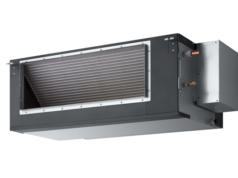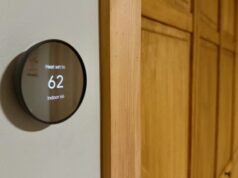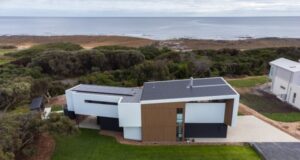
Ducted heating allows warm air to be channelled through floor or ceiling vents to different parts of a house. Controlling these vents allows you to control where heat is distributed.
If you want heated comfort throughout your home – or even just in a couple of areas at the same time, then ducted systems are generally one of the cheapest, most efficient and most effective options. They are suitable for homes in all climates, but particularly for homes that experience extreme temperature variations between summer and winter months.
Ducted heating is fairly expensive to install, but once it’s in it can offer a great deal of versatility in the way the home is heated.

How does ducted heating work?
Ducted heating works using a core central heating unit, which produces hot air that is then pumped out through a network of heavily insulated ducts under the floor or in the ceiling to vents located in different parts of the house.
The central heater component is normally either a large gas furnace heater running on LPG or natural gas, or a reverse cycle air conditioner (heat pump) system, which has the added advantage of allowing ducted cooling through the same system.
Most ducted central heating systems allow you to control how heat is distributed throughout your house using what’s known as ‘dampers’. Dampers are mechanisms that block heating ducts to prevent heated air from flowing to certain parts of the house. These dampers can either be controlled manually, or automatically via a remote control system. Many automated dampers allow you to close the duct part of the way, and thus control the flow of hot or cool air to a room.
Installation requirements
Because the ducting runs through your ceiling cavity it needs to adhere to the requirements of the Building Code of Australia, which say that there needs to be a clearance of 400mm between the ceiling and the duct work.
In most cases, the central heating unit is located near the centre of the house, often on the roof to prevent too much noise entering the home. Ducts can be vented in either through the floor, the ceiling or occasionally the wall (or a combination of the three), as a matter of preference. If you are predominantly using the system for heating, then floor vents are a more sensible option because heat rises, and this will heat the room more effectively.
Another thing to consider when installing vents is whether or not you think you might move furniture around in future – the location of floor vents in particular will affect how you do this. To decide on the best positions in your home, discuss your needs with an installer.
Energy efficiency
Energy efficiency is a very important factor when you’re planning a central heating system – not only will it have a big impact in terms of CO2 emissions, but it’ll also dictate how much you’re spending to heat your home.
The most energy efficient ducted heating option is one that uses solar power. The next best thing is natural gas. A 3 star rated gas ducted heating system will produce approximately 2.4 tonnes of CO2 per year to heat an area up to 150 m2. An equivalent LPG heating system will produce about 3.1 tonnes of CO2, and heating using a ducted reverse cycle air conditioner will create approximately 6 tonnes of CO2. This is mostly due to the fact that electricity is fairly inefficient in terms of the amount of CO2 required to produce it.
Running costs
The other factor you’ll need to consider is how much it costs to run different types of ducted heating systems. 4 or 5 star rated ducted natural gas systems are the cheapest option by far, and only cost slightly more than a natural gas space heater to run. Even a 1 or 2 star rated natural gas system costs approximately 2/3rds of what you’d need to pay to heat with a ducted reverse cycle air conditioner – and that difference is set to expand as electricity prices rise. Of course, with a reverse cycle air conditioner, you also get the option to switch it to ‘cool’ during the warmer months.
Ducted LPG systems are expensive to operate as far as ducted systems go, costing almost twice as much to heat with as reverse cycle air conditioners.
It’s interesting to note that natural gas powered hydronic central heating systems are only slightly more costly to operate than the most efficient ducted systems. If you or any of your family find that ducted heating systems cause allergies or asthma to play up, a hydronic system may be worth investigating as an alternative.
|
Advantages
|
Disadvantages
|





